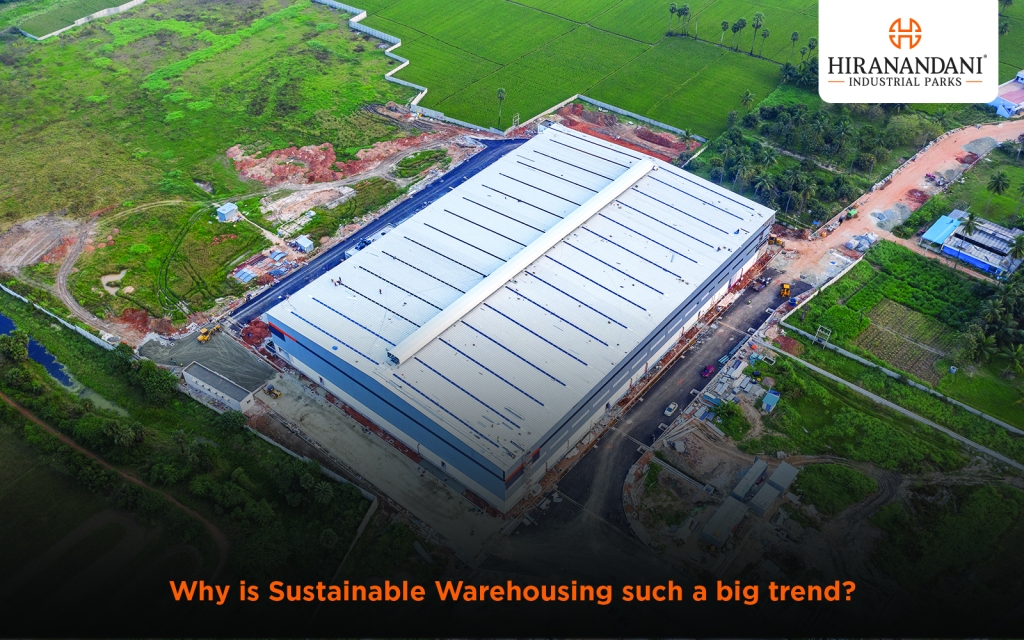Warehousing and storage facilities play a vital role in the logistics and supply chain industry. With the increasing demand for faster delivery and efficient operations, warehouses are under immense pressure to perform at an optimal level. However, the environmental impact of such operations cannot be ignored. Sustainable warehousing has emerged as a big trend in recent years due to various factors, such as environmental concerns, regulatory compliance, and cost savings.

- Environmental Concerns
According to the European Logistics Supply Chain Sustainability Report, 80% of companies say that reducing carbon dioxide (CO2) emissions in the next five years is a key focus area for their environmental initiatives and 28% include ESG targets as obligations for supply chain partners to meet in their contracts.
Climate change and the need for environmental sustainability have become pressing issues in recent years. Companies are recognizing their responsibility to reduce their carbon footprint and minimise their impact on the environment. Warehousing and storage facilities are among the biggest consumers of energy and resources, and thus, contribute significantly to greenhouse gas emissions. The implementation of sustainable practices and technologies can help reduce these emissions and improve the overall environmental performance of the industry.
- Regulatory Compliance
Governments around the world are enacting regulations to reduce greenhouse gas emissions and improve environmental sustainability. These regulations are aimed at reducing the negative impact of human activities on the environment. Warehousing and storage facilities are subject to these regulations and must comply with them to avoid fines and penalties. Implementing sustainable practices not only helps companies comply with these regulations but also demonstrates their commitment to environmental sustainability.
- Cost Savings
Sustainable warehousing practices can result in cost savings for companies. Energy-efficient lighting, heating, and cooling systems can significantly reduce energy costs. The use of sustainable packaging materials can reduce material costs while also reducing waste. Efficient logistics practices, such as optimising truck routes and reducing idle time, can also result in cost savings. Sustainable practices can also enhance a company’s brand image, attract environmentally conscious customers, and improve employee morale.
How Can You Make Your Warehouse More Sustainable?
Implementing sustainable practices in your warehouse can be a challenging task, but the benefits are worth the effort. Here are some ways you can make your warehouse more sustainable:
- Energy-efficient lighting: Replace traditional lighting with energy-efficient LED lighting. LED lighting uses less energy and has a longer lifespan than traditional lighting.
- Efficient heating and cooling systems: Install high-efficiency HVAC systems and insulation to reduce heating and cooling costs.
- Sustainable packaging: Use sustainable packaging materials, such as biodegradable and recyclable materials, to reduce waste and promote sustainability.
- Optimize logistics practices: Optimize truck routes, reduce idle time, and use fuel-efficient vehicles to reduce transportation-related emissions and costs.
5 Ways HIP is Improving Sustainability in Warehousing Industry
Here are 5 ways that HIP is improving sustainability in the warehousing industry:
- Energy-efficient lighting and HVAC systems: Hiranandani Industrial Parks utilises energy-efficient lighting and HVAC (heating, ventilation, and air conditioning) systems in its warehouses, which not only helps in reducing energy consumption but also helps in creating a better work environment for employees.
- Use of sustainable materials: The brand uses sustainable materials for the construction of its warehouses, such as recycled steel, bamboo, and other renewable resources. This not only helps in reducing the environmental impact of the development but also helps in creating a healthier work environment.
- Waste management and recycling: Hiranandani Industrial Parks has implemented a comprehensive waste management system in its developments, including recycling of waste materials. This not only helps in reducing the environmental impact but also helps in reducing the operational costs of the warehouses.
- Solar Power: HIP has installed solar panels on the rooftops of its warehouses, which generate renewable energy and reduce dependence on traditional sources of power. This not only helps in reducing carbon emissions but also helps in reducing energy costs, making the operations of the warehouses more sustainable.
- Rainwater harvesting: HIP has implemented rainwater harvesting techniques to conserve water. The rainwater that is collected is used for various purposes such as watering the green areas and flushing toilets. This reduces the reliance on municipal water supply and ensures that the available water resources are used efficiently.
Conclusion
In conclusion, sustainable warehousing is a big trend that is driven by environmental concerns, regulatory compliance, and cost savings. Implementing sustainable practices and utilising innovative technologies can help companies minimise their environmental impact and improve their overall efficiency. By partnering with Warehousing Storage Solutions providers, such as Hiranandani Industrial Parks, companies can further enhance their sustainability efforts and contribute to a more sustainable future.

Leave a comment